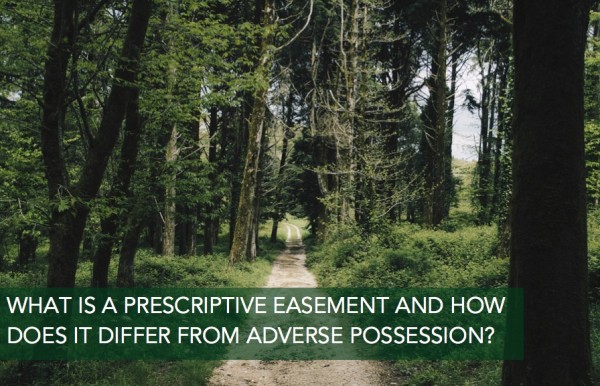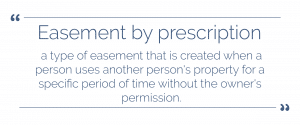

Easement by prescription is a type of easement that is created when a person uses another person’s property for a specific period of time without the owner’s permission. This type of easement is also known as a “prescriptive easement” or a “presumed easement.”
In order for an easement by prescription to be established, the person using the property must do so openly and continuously for a period of time that is set by the state where the property is located.

This period of time is often called the “statutory period.” Once the statutory period has passed, the person using the property can claim a right to continue using the property, even if the owner does not agree.
Once the statutory period has passed, the easement is considered to be acquired by prescription, and the owner of the land cannot thereafter interfere with the right to use the land for the purpose for which the easement was acquired.
A prescriptive easement can be created by:
In other words, someone who has no ownership interest in your property (a trespasser), can obtain an easement by prescription, aka without your express permission, if they openly use your land without your permission for a period of 5 years without interruption.
ALSO READ A Case Involving an Implied Easement and an Equitable Easement - Romero v. ShihSo for example, if your neighbor creates a path across your property to the woods where he hunts, and he uses the path for 5 years without any objection by you, your neighbor can obtain a prescriptive easement to use that path. This is obviously a somewhat simplified explanation but this is the general principal.
To be clear, your neighbor, even with a prescriptive easement does not own the path – he does not own your property. But he does have the right to use your land to get to the woods.
You might be thinking this sounds a lot like adverse possession, and it is similar. Indeed, there are similar requirements. But, adverse possession establishes fee title to the real property occupied, whereas a prescription only creates an easement in favor of use.
So an adverse possessor receives the benefits of a fee title owner, including the right to exclusive possession of the property. By contrast, a prescriptive easement only gives the easement holder a limited right to use the property of another and only in the manner used during the prescriptive 5 year period.
Regardless, as a property owner, allowing trespassers to obtain interests in your property by adverse possession or prescription is not a desirable outcome. Be vigilant and aware of what is occurring on your property, and you should not have any problems.
ALSO READ How to Protect Your Property From Prescriptive Easement?If you’re looking for an easement dispute attorney, Schorr Law has top rated real estate attorneys in California. If you have any questions regarding your potential prescriptive easement matter, please feel free to contact Schorr Law, APC at (310) 954-1877, or [email protected]. You can also send us a message by using our contact form.